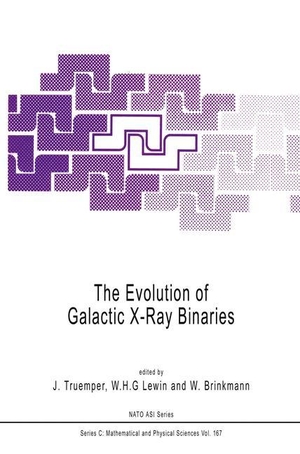Für statistische Zwecke und um bestmögliche Funktionalität zu bieten, speichert diese Website Cookies auf Ihrem Gerät. Das Speichern von Cookies kann in den Browser-Einstellungen deaktiviert werden. Wenn Sie die Website weiter nutzen, stimmen Sie der Verwendung von Cookies zu.
Cookie akzeptieren
The Evolution of Galactic X-Ray Binaries
- Springer Netherlands
- 2011
- Taschenbuch
- 324 Seiten
- ISBN 9789401085410
The idea to hold a conference on the Evolution of Close-Binary X-ray sources grew in the summer of 1984. At that time we were hoping that some new results would be harvested in the months to come which would stimulate further work. We were particularly looking towards the Euro pean X-ray Observatory, EXOSAT, for new contributions. How lucky we were; quite unexpected developments took place. Just prior to the conference, quasi-periodic oscillations (now known as QPO) were discovered in three bright low-mass X-ray binaries: GX 5-1, Sco X-1, and Cyg X-2. They played an important role at the meeting. The possibility that QPOs imply a neutron
Mehr
Weniger
zzgl. Versand
in Kürze